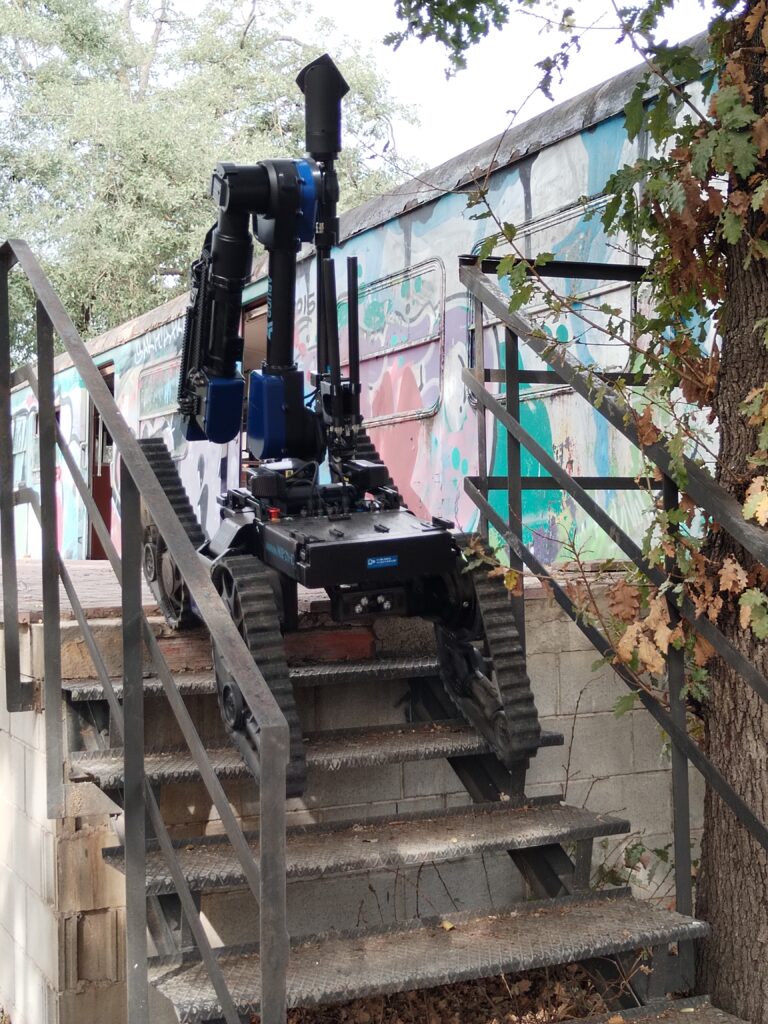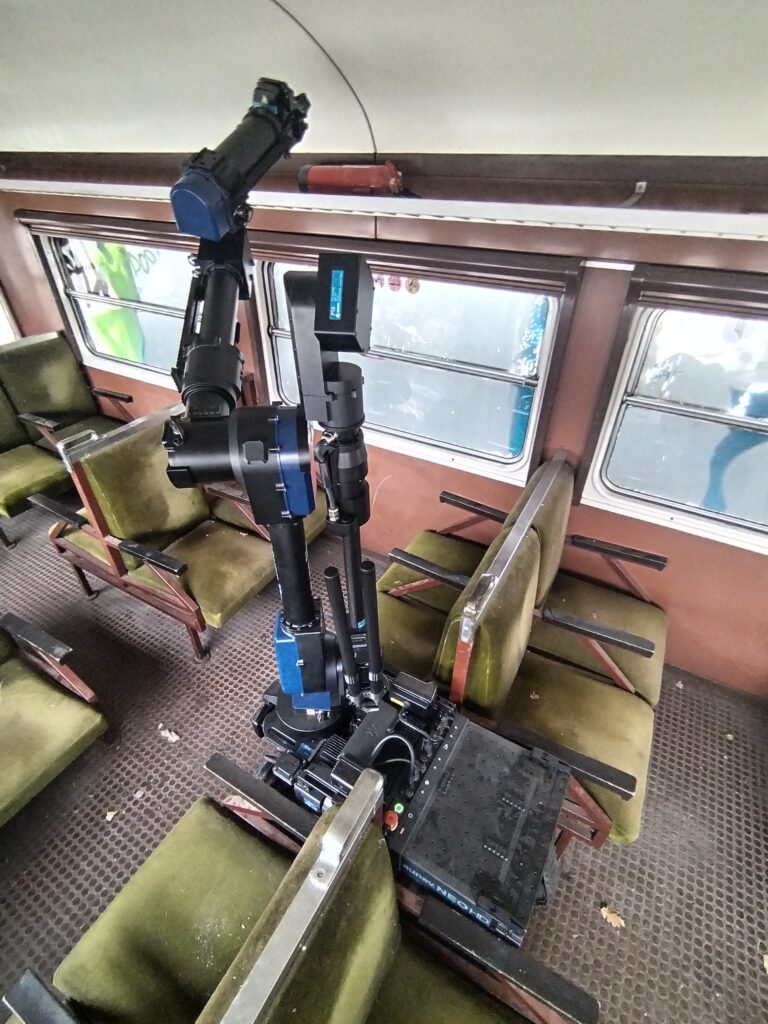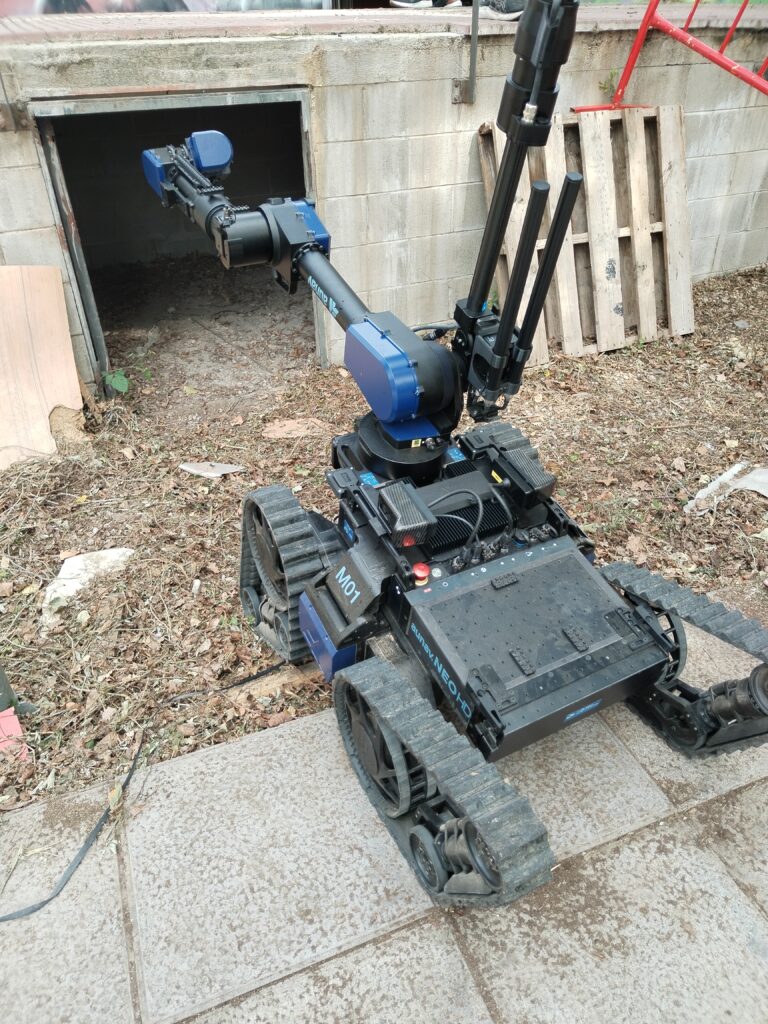aunav.NEO HD: Precision Mobility for High-Stakes Operations
In high-risk environments—collapsed buildings, industrial accidents, smoke-filled tunnels—human limitations become mission-critical constraints. Low visibility, unstable terrain, and toxic substances can delay or prevent life-saving interventions. What if robots could overcome these barriers, acting as agile, intelligent extensions of emergency teams?
Enter CARMA: a revolutionary project that is not only developing advanced unmanned ground vehicles (UGVs) but also creating a full ecosystem of human-robot collaboration for hazardous environments. With AI-powered coordination, extended reality interfaces, and resilient communications, CARMA is equipping first responders with a new kind of teammate—one that can see in the dark,
In this article, we explore the technology behind this shift, focusing on aunav.NEO HD platform, and what makes CARMA’s approach to UGV integration so groundbreaking.

Adaptive Design for Unpredictable Terrain
Far from a conventional robot, aunav.NEO HD stands out as a next-generation ground platform engineered for versatility and resilience in high-risk, unpredictable environments. While it excels in EOD/IED and CBRN missions, its modular architecture also makes it highly effective in logistics support, surveillance, and casualty evacuation tasks. But its true differentiator lies in its patented variable geometry system—a unique technology that allows the UGV to automatically adjust its track width within seconds. This dynamic capability enables the robot to maneuver through narrow doorways, traverse debris-filled corridors, and stabilize itself on uneven or loose terrain. Where wheeled or fixed-width robots struggle, aunav.NEO HD reshapes itself to keep moving.
For scenarios like tunnel rescues or navigating confined spaces in industrial disasters, this capability becomes mission-critical. It ensures not only access, but stability—allowing the platform to serve as a reliable base for sensor arrays, robotic arms, or payloads without the risk of toppling or mechanical strain.

Operator-Centered Engineering
Emergency operations demand precision under pressure. aunav.NEO HD is designed with operator support as a foundational principle. Its auto-stabilizing platform, combined with a low and centered gravity design, allows responders to focus on mission objectives rather than vehicle control. Whether performing delicate Explosive Ordnance Disposal (EOD) tasks, handling hazardous materials, or evacuating casualties, operators benefit from a highly responsive system that minimizes manual corrections.
The vehicle also integrates an advanced assistance system suite, including intuitive driving modes and automated terrain compensation, dramatically reducing the cognitive load on the user. This proves essential in chaotic, high-stress environments where decision time is short, and risks are high.
Multi-Mission Versatility: From EOD to Evacuation
One of aunav.NEO HD’s core strengths lies in its multi-mission design. The platform can be quickly configured for a wide range of critical applications:
- EOD/IED Neutralization: With the ability to carry robotic arms and manipulation tools, aunav.NEO HD can handle and neutralize explosives in environments too dangerous for human bomb squads.
- CBRN Operations: Equipped with chemical, biological, radiological, and nuclear sensors, the vehicle can survey and map contaminated areas while keeping responders at a safe distance.
- Logistical Support: The vehicle can transport payloads through compromised environments, providing essential supplies to trapped victims or tools to human teams operating further in.
- Casualty Evacuation: With a reinforced frame and customizable mounts, aunav.NEO HD can carry injured individuals out of harm’s way when traditional stretchers or human access are not viable.
This modularity ensures that a single platform can serve multiple roles across different mission types—reducing cost, training requirements, and deployment complexity.
Intelligence-Driven Collaboration through CARMA
What truly transforms aunav.NEO HD from a rugged robot into a smart teammate is its integration into the CARMA ecosystem. Far beyond remote-controlled systems, CARMA enables full-spectrum autonomy and collaborative intelligence.
Through AI-driven capabilities, the platform can navigate autonomously in GPS-denied or degraded environments, recognizing obstacles, mapping terrain in 3D, and dynamically adjusting its path. This is enabled by sensor fusion, integrating LIDAR, thermal imaging, and inertial navigation into a cohesive, real-time understanding of its surroundings.
For victim interaction and responder support, Natural Language Processing (NLP) capabilities are being developed to allow the robot to recognize spoken commands or communicate with survivors. This extends to Extended Reality (XR) interfaces, offering commanders immersive situational awareness and intuitive control from safe standoff distances.
Perhaps most critically, CARMA’s resilient mesh communications network ensures that even in structurally compromised areas or subterranean environments, the UGV remains connected—either directly or by deploying itself as a mobile relay for other units.
This networked approach enables multi-UGV orchestration, allowing multiple aunav.NEO HD units to share data, divide tasks, and act in coordinated formations, whether for search, reconnaissance, or hazard mitigation.

Real Impact on Emergency Response
By combining adaptability, operator-centric engineering, and advanced autonomy, aunav.NEO HD addresses the core operational challenges that limit today’s disaster response missions. Its deployment through CARMA delivers tangible benefits:
- Enhanced situational awareness in low-visibility or hazardous zones
- Safer reconnaissance without exposing human teams to collapse or contamination risks
- Faster response times through autonomous pathfinding and multi-robot coordination
- Smarter victim support, with robots that can mark safe routes or deliver critical supplies
- Reduced cognitive burden on operators thanks to stabilization, navigation aids, and XR tools
In a world where natural disasters, industrial incidents, and urban conflicts are growing in complexity, platforms like aunav.NEO HD offer not just incremental improvement—but a fundamental shift in how we respond. By giving emergency teams a robotic partner that is resilient, intelligent, and mission-adaptable, CARMA is paving the way for a new era of human-robot synergy in critical operations.
